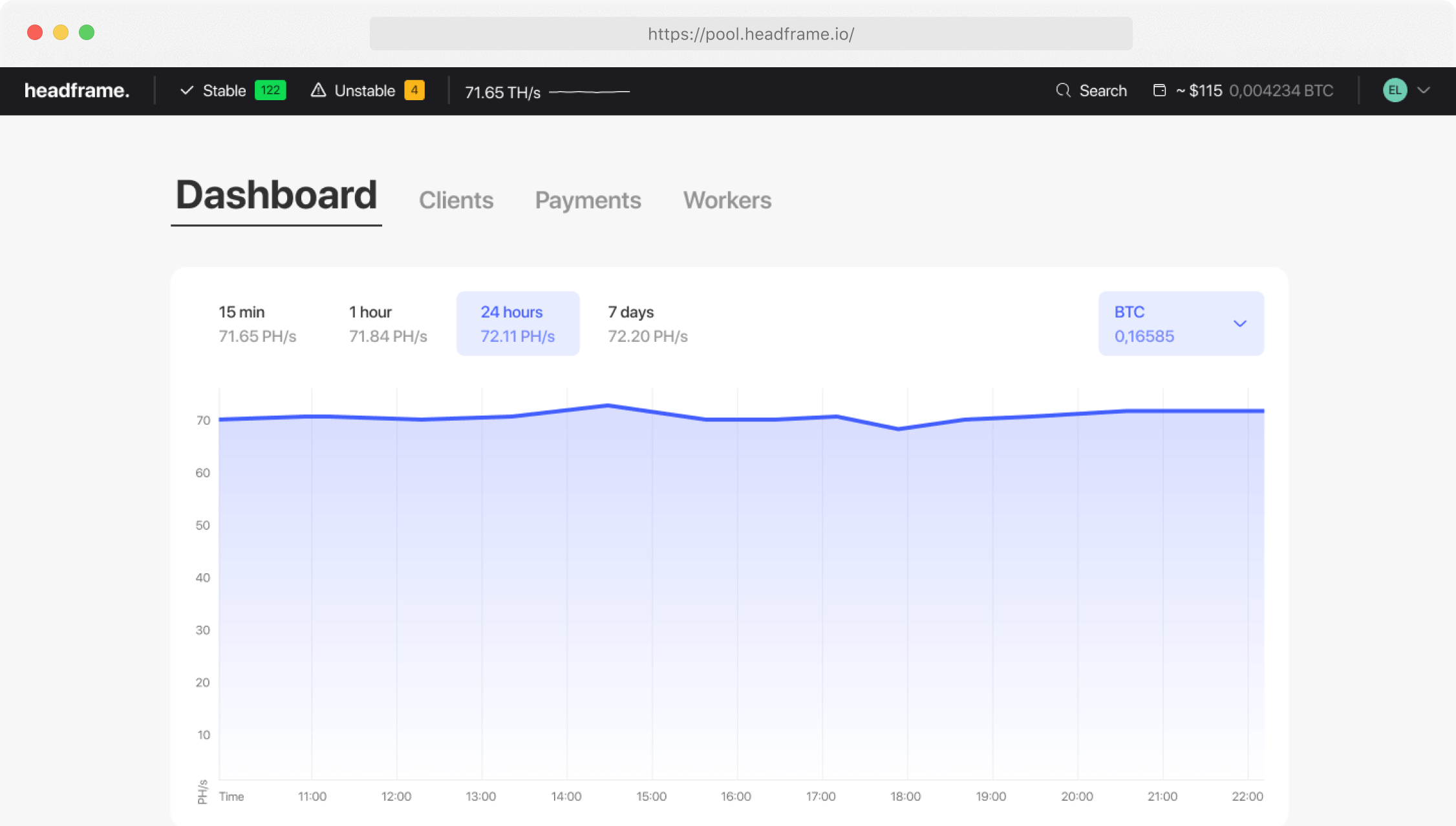Infrastructure Planning for Large Mining Pools
Infrastructure planning for large mining pools is a crucial aspect of successful and sustainable operations in the cryptocurrency industry. Mining pools, which combine the efforts of numerous miners, require complex and large-scale solutions to ensure their efficiency and reliability. This article will discuss the main elements of infrastructure planning for large mining pools, from location selection to technical maintenance and scaling.
Earn more money with Headframe
Join a mining pool and get the best profitability in mining. Already more than 10,000 miners trust Headframe.
The first step in planning infrastructure for a large mining pool is choosing the optimal location. This decision should consider several factors, including the cost of electricity, the availability of reliable internet connectivity, climatic conditions, and local legislation. Electricity is one of the primary expenses in cryptocurrency mining, so selecting a region with low electricity rates can significantly reduce operational costs. Climatic conditions also play an important role, as a cooler climate can reduce cooling costs for equipment.
After selecting an appropriate location, a plan for the construction and equipment of the mining farm must be developed. This includes designing the premises, providing a cooling system, and installing electrical and network infrastructure. Effective cooling is critical for maintaining optimal operation of mining rigs and preventing overheating. Various cooling methods are available, such as air, liquid, or immersion cooling, each with its advantages and disadvantages. The choice of the appropriate cooling system depends on the specific conditions and needs of the pool.
The electrical infrastructure must be designed to accommodate the high energy consumption of mining rigs. This involves installing powerful transformers, voltage stabilizers, and backup power sources such as generators or battery systems. Reliable power supply is a critical factor, as power outages can lead to significant losses due to equipment downtime.
The internet connection must be high-speed and reliable to ensure stable data transmission between miners and the pool. This is especially important for large mining pools, where any delay can significantly impact productivity and efficiency. It is also essential to have backup communication channels to avoid downtime in case of problems with the primary internet provider.
Mining equipment must be carefully selected and configured for maximum efficiency. This includes choosing modern ASIC miners or GPUs that provide high performance and energy efficiency. It is important to consider not only the initial cost of the equipment but also its operational expenses, including electricity consumption and maintenance costs. Regular equipment upgrades and transitions to more modern models can significantly enhance the efficiency of the mining pool.
Technical maintenance and monitoring are integral parts of the successful operation of a mining pool. Regular technical maintenance of equipment helps prevent breakdowns and reduce downtime risks. It is also important to use monitoring systems that allow real-time tracking of equipment status, identifying anomalies, and promptly addressing potential issues. Automating monitoring and maintenance processes can significantly increase efficiency and reduce labor costs.
Security is another critical aspect of infrastructure planning for large mining pools. This includes physical security of the facilities, protection against cyberattacks, and ensuring data confidentiality. Installing surveillance systems, alarms, and access control helps protect the equipment from theft and vandalism. Using advanced cybersecurity methods, such as data encryption, two-factor authentication, and regular security audits, helps protect the mining pool from hacking attacks and data breaches.
Scaling is an important factor for large mining pools aiming for growth and expansion. Infrastructure planning should consider the possibility of increasing the amount of equipment and expanding capacities without significant interruptions and additional costs. This includes flexible design of premises, the possibility of adding new electrical and network resources, and the use of modular cooling and power systems. Flexible scaling allows mining pools to adapt to market changes and quickly respond to increased demand for computational power.
Environmental responsibility is becoming an increasingly important aspect for large mining pools. Given the high energy consumption in mining, many pools strive to minimize their environmental impact. This may include the use of renewable energy sources such as solar, wind, or hydro power, as well as the development and implementation of energy-efficient technologies and processes. An environmentally responsible approach helps not only reduce operational costs but also improve the pool’s reputation among participants and the public.
In conclusion, infrastructure planning for large mining pools requires a comprehensive approach and consideration of multiple factors. The choice of optimal location, design and construction of facilities, ensuring reliable power supply and internet connectivity, selection and configuration of equipment, technical maintenance, and security—all these elements play a key role in ensuring the sustainability and efficiency of a mining pool. Flexibility and scalability, as well as environmental responsibility, are important aspects that will help mining pools adapt to changing market conditions and successfully develop in the long term.


